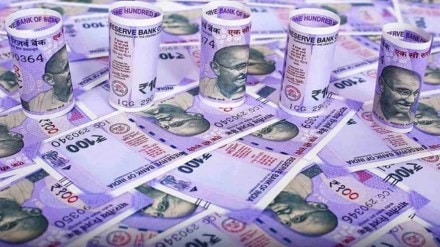Finance minister Nirmala Sitharaman on Wednesday stressed that private capex has started to pick up, supported by measures such as the production-linked incentive (PLI) schemes. Coupled with elevated public capex, it will help herald a virtuous investment cycle in the economy, she said, countering the Opposition’s criticism that private capex still remains elusive.
Citing a recent report of an equity research firm, the minister said the capex announcements by private players are up 35% from a year before and 53% from the pre-Covid levels. A large cement maker (Ultratech) announced in June a capex of Rs 12,886 crore, while Mahindra & Mahindra recently declared that it would invest Rs 10,000 crore to set up a electric vehicles plant in Maharashtra, the minister said, giving a few instances of capex announcements by private companies.
On Tuesday, the Reserve Bank of India (RBI), too, had said in its bulletin for December that easing input cost pressures, strong corporate sales and a turn-up in investments in fixed assets indicate the beginning of an upturn in the capex cycle, which could expedite the growth momentum.
Also Read: Private capex will be back on track soon, says India Inc
Sitharaman asserted that the “targeted” and pragmatic approach of the government helped avert economic recession in India in the wake of the pandemic.
“Borrow and spend and even print money to reboot the economy was the suggestion by some during the Covid. As we close 2022, we should look at the negative effect of the use of this suggestion (massive demand-side measures) by other countries, which have gone into recession,” she said, while replying to a debate in the Rajya Sabha on the supplementary demands for grants for FY23.
The government, she stressed, is closely monitoring inflation—caused by “extraneous” factors in the wake of the Ukraine war due to a food and fertiliser crisis in the international market–to ensure there is no surge in price pressure.
Also Read: Capex loans: Rs 70k cr sanctioned for states so far
Retail inflation hit an 11-month low of 5.88% in November, having dropped below the central bank’s tolerance limit of 6% after a gap of 10 months. Wholesale price inflation, meanwhile, dropped to a 21-month trough of 5.85% in November. Of course, inflation in India is still way lower than in many countries, including advanced economies.
Sitharaman exuded confidence that the Centre will contain the fiscal deficit within the target of 6.4% in FY23. The buoyant revenue mop-up will help offset the net additional expenditure of Rs 3.26 trillion, as proposed in the first batch of supplementary demands for FY23, she said.
Earlier, while participating in the debate, former finance minister and senior Congress leader P Chidambaram sought to know how the government was planning to finance the additional expenditure.
“In September itself, the government made it clear that we aren’t changing our borrowing schedule and borrowing plans… There’s enough revenue buoyancy which gives me confidence that we will fund these supplementary demands without breaching the fiscal deficit target,” Sitharaman said.
The government was forced to take on extra spending commitments, mainly to fund food and fertiliser subsidies, after the Ukraine war broke out unexpectedly in late February and caused a spike in food and energy prices. The first batch of supplementary demands for grants has now been cleared by Parliament.
Amid criticism by the Opposition that the Centre has been using the cess route to corner a large chunk of funds, thus depriving states of their legitimate revenue share, Sitharaman highlighted that the Central government has spent much more than what it got through such imposts.
For instance, in FY22, the collection of the road and infrastructure cess stood at Rs 1,95,987 crore, while the amount utilised was as much as Rs 2,51,738 crore, she said. Similarly, the health and education cess stood at Rs 52,732 crore last fiscal, while the amount utilised was Rs 78,287 crore, she said. Importantly, states are the biggest beneficiaries of these projects that are partly-funded by this cess proceeds. Cesses are not part of the divisible tax pool that is shared with states.
The government had on Tuesday informed Parliament that cess and surcharges accounted for 28.1% of gross tax revenue in FY22, against 18.2% in FY20.
